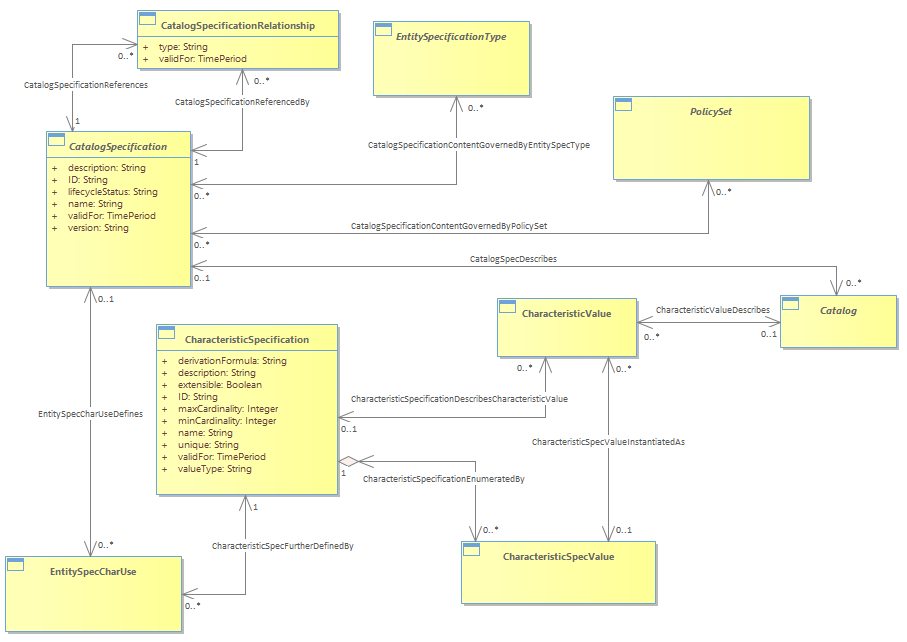Figure Cat.01 – Catalog Specification

|
Project:
|

Figure Cat.01 – Catalog Specification : Class diagram
The Catalog ABE paragraph describes the usage of “Catalogs” to provide consistency of catalog model definitions across the Product, Service, and Resource domains, and to support the federation of catalogs and the ability to create a catalog containing any entity and/or its specification.
A generalized Catalog ABE contains generic (abstract) CatalogSpecification and Catalog entities used to define types of catalog specifications and types of catalog entities. The patterns used to model Catalog business entities are the EntitySpecification/Entity and the CharacteristicSpecification/CharacteristicValue patterns. It also uses relationship entities as an alternate to the Composite/Atomic pattern. It embraces the existing entity of ‘Product Catalog ABE’ definition present before this guidebook was developed. The CatalogSpecificationRelationship entity provides the ability to group specifications much like the Composite/Atomic pattern using the “type” attribute to specify that the relationship is a composite/atomic. For example, a Smart Home CatalogSpecification could be comprised of a Smart Home Security CatalogSpecification and a Smart Home Appliance CatalogSpecification. The “type” attribute can also be used to indicate that one CatalogSpecification supersedes another or is included with another. The content of associated Catalogs can be dynamically defined using relationship to EntitySpecificationType for simple rules and/or to PolicySet for more complex rules. EntitySpecificationType is a way to create categories of any specification entity to which it or its subclasses are related, such as a ProductSpecificationType which is a subclass of EntitySpecificationType. For example, a Smart Home Security ProductSpecificationType could be related to the Smart Home Security CatalogSpecification. This relationship would enable a Smart Home Security Catalog, in this case a ProductCatalog, to be dynamically created. If there are more complex rules, such as limiting the catalog to only containing ProductOfferings that are in surplus status then a PolicySet could be defined to only include ProductOfferings that have this status. The Characteristic pattern can be used to define dynamic attributes for any CatalogSpecification along with the attributes values for any Catalog. Basic entities related to a CatalogSpecification and relationships with the existing entities are shown in the Figure Cat.01 – Catalog Specification. |


